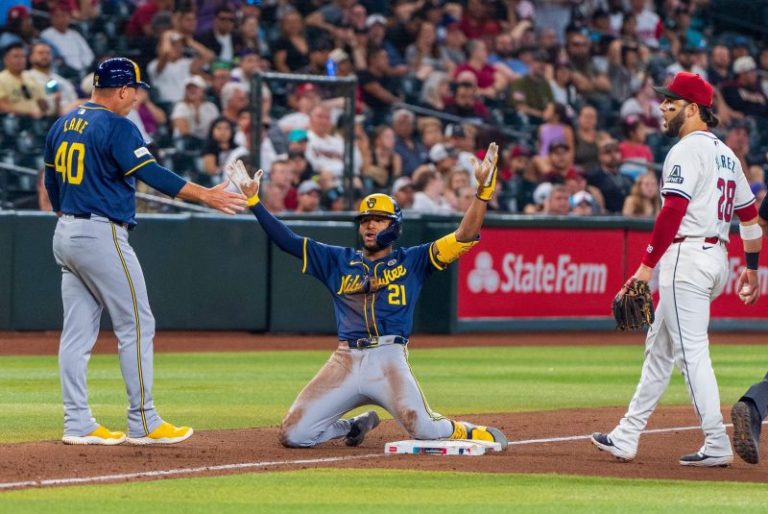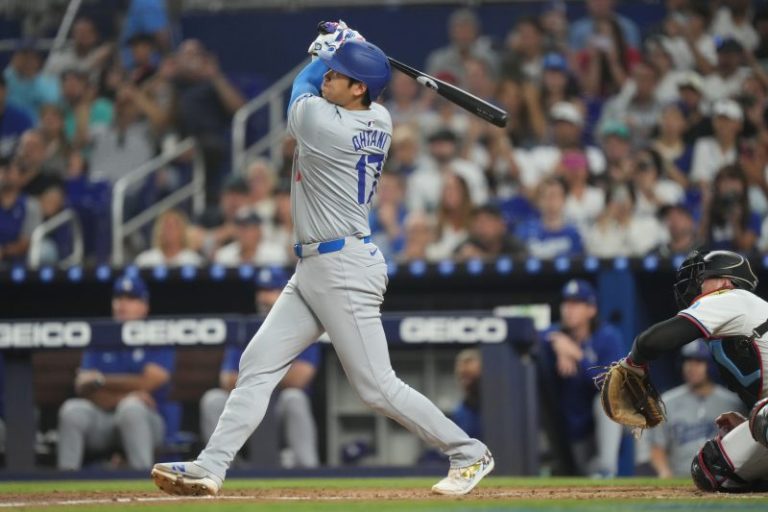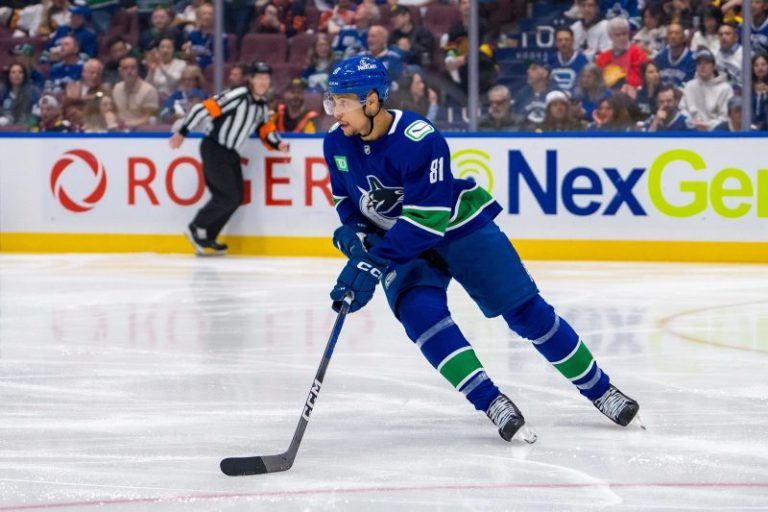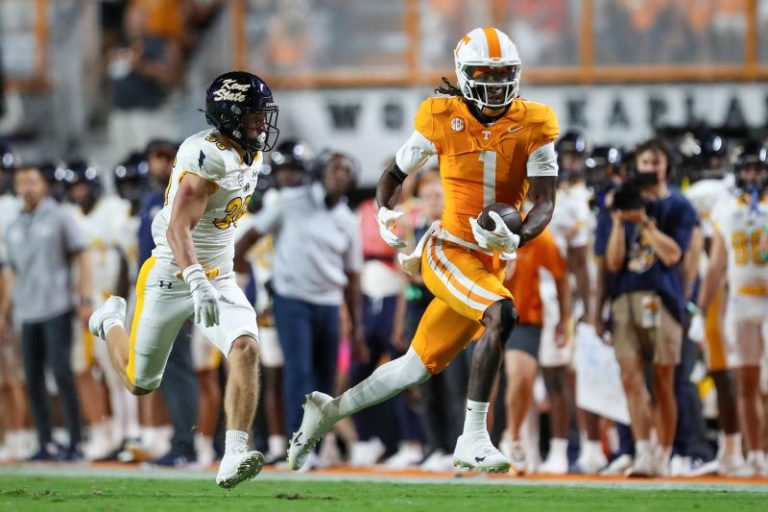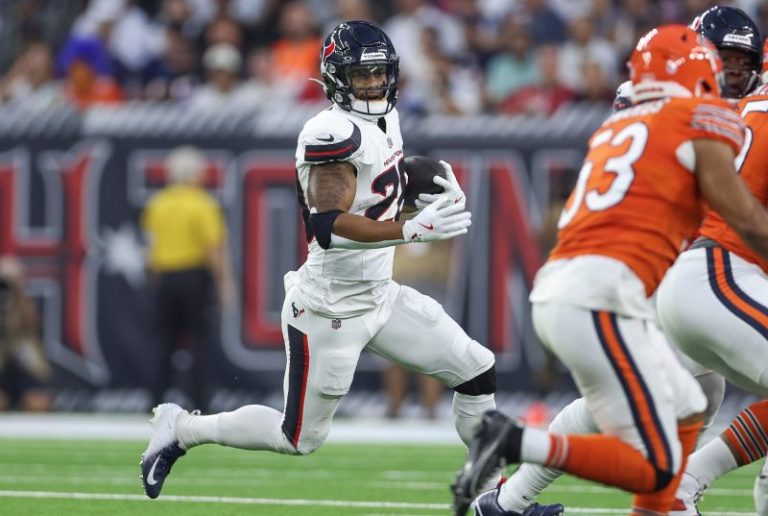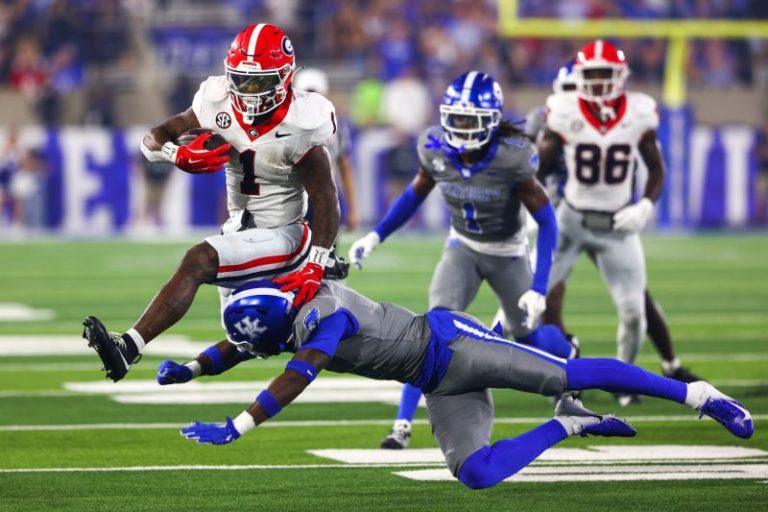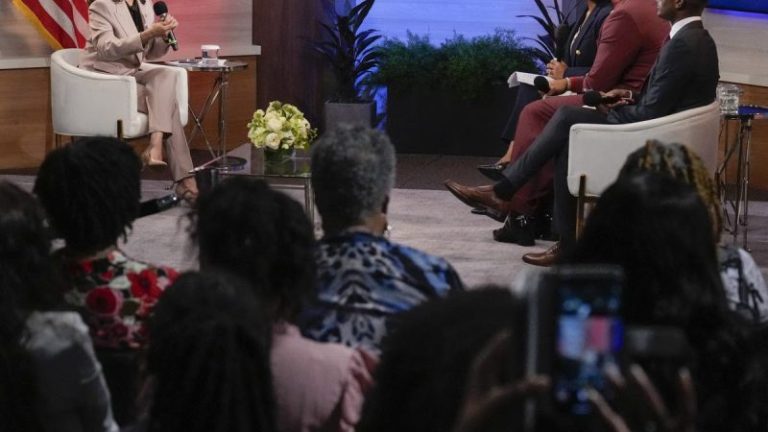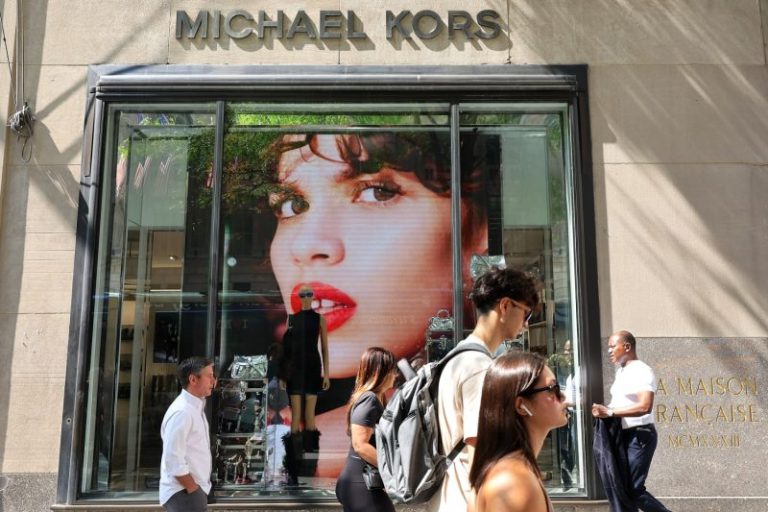PHOENIX — The Milwaukee Brewers realize that all of a sudden they have a problem on their hands.
It hasn’t come up in a single staff meeting, shown up in an analytics report or even casually discussed in the clubhouse.
But here we are, 173 days into the baseball season, and for the first time, the Brewers have no choice but to face the issue.
What in the world are they going to do about rookie sensation Jackson Chourio?
Oh, there’s nothing about his performance on the field that concerns them. This is a guy hitting .311 with 18 homers and 61 RBI since June 2 with a .929 OPS. Of his last 19 hits, 15 have gone for extra bases.
Follow every MLB game: Latest MLB scores, stats, schedules and standings.
Chourio is thriving off the field too. He been living with his parents from opening day until three weeks ago, and his teammates, coaching staff, clubhouse attendants, front office executives and scouts can’t stop gushing about him.
“He’s an unbelievable human,’ Brewers manager Pat Murphy says.
Says Brewers GM Matt Arnold: “You see this kid smiling all of the time, and engaging with his teammates. He’s just such a joy to have around.’
The Brewers are on the verge of clinching the National League Central, and considering all of the adversity they’ve faced the past 12 months – injuries to their stars, their manager bolting for the Cubs, their baseball chief leaving for the Mets and trading away a Cy Young award winner – they’re poised to have a celebration for the ages.
That’s the problem.
You see, Chourio just happens to be 20 years old. He doesn’t turn 21 for another six months.
Even in the beer-loving, beer-consuming, beer-guzzling tradition of Milwaukee, they must abide by the same laws as every other city in America.
So, what’s a ballclub to do?
“Oh my God, I didn’t think about that,’ Brewers starter Freddy Peralta, 28, says. “What are we going to do? Man, we’ve got to hurry up and think about what we’re going to do.’
Says Willy Adames, 29: “I know what we could do. We’re going to get him some apple juice. We’ll have a champagne shower. And he’s going to get an apple juice shower. We can’t get him into trouble.’
Catcher William Contreras, 26: “Great question. He’s just 20, right? That’s a problem. So water. Lots and lots of water.’
Catcher Eric Haase, 31: “I don’t think anyone’s going to be enforcing any rules. He’s a huge part of this team. He should be able to do anything he wants.’
Chourio laughs when posed the question, believing that an ice shower will be just fine, until it finally hit Peralta.
“I got it,’’ Peralta blurted out, “I got it. We’ll get some non-alcoholic beers and spray him. You know, those O’Doul’s. That will be perfect.
“I know we’ve got to do something because he’s meant way too much to this team.’
Chourio, the Brewers’ youngest everyday player since Hall of Famer Robin Yount in 1975, has been invaluable to the team this season. He’s living up to every ounce of the hype as one of baseball’s top prospects, becoming the youngest player in history to hit 20 homers and steal 20 bases in a season, hitting .276 with 21 homers and 77 RBI as a rookie.
The Brewers, who started scouting Chourio when he was just 11 years old in Venezuela, gave him a $1.8 million international signing bonus when he was 16, and then signed him to an eight-year, $82 million contract in December when he was 19. It was the richest contract given to a player without playing a single game in the major leagues.
Chourio, who was informed midway through spring training that he’d make the opening-day roster, concedes that he felt pressure to live up to the contract. He was hyped as a future star, paid like one, and wanted to immediately live up to the billing.
The burden overpowered him, and after two months, was hitting just .210 and a .581 OPS, with only nine extra-base hits, striking out 47 times in just 162 at-bats.
“When you have a tough start, it’s tough for anybody,’ Adames says, “especially for him being 20 years old and learning the game in the big leagues for the first time. It was super tough. Obviously, he was very hyped up by everyone.
“At the beginning, we kind of wanted him to figure it out on his own. Then, when he kept struggling, we said, ‘OK now we have to help him. We said, ‘Don’t worry. Things are going to be fine. Things are going to be great in September.’ Then, he started to pick it up, got hot, and he hasn’t stopped.
“Now it’s like, holy smokes. This guy is the real deal. He’s showing the world what type of player he is because I’m sure people were doubting him in the beginning.’
Even with those struggles, sometimes sitting on the bench for multiple games, Chourio never let anyone see signs of weakness. He would show up early for pre-game workouts, kept believing this would be the day he would break though, and even after a hitless night with three strikeouts, would leave the clubhouse smiling.
“We knew he was going to be a superstar, but it was tough for him going through that,’ Peralta says. “You could see he was frustrated, because he wanted to prove why he got paid. But he was the same kid in the clubhouse. He was still cracking jokes.
“I remember talking to him that first month and I don’t know why, but he listened to me. I said, ‘Bro, you better remember this, but at some point this season, you’re going to be hitting .270 with 15 homers.’
“I tell him now, ‘Look at where you are. You’re a superstar, boy.”
Chourio has put himself in the middle of the Rookie of the Year discussion, leading the NL with a .311 batting average since June 2, and ranking in the top five in on-base percentage (.370), slugging percentage (.569) and OPS (.929). He has 61 RBI and 43 extra-base hits in the stretch, going from a .542 OPS in May to a .897 OPS in June, .878 in July, .925 in August and a 1.033 in September.
“This kid just continues to be better and better,’ Arnold says. “We made a big bet when we originally signed him, and he’s been everything we could have hoped for and more. He’s got all of the ingredients to have an incredibly high ceiling. We’re seeing him do things in the sport that haven’t been done at his age.’’
Who knows, that two-month slump could be the best thing that happened to Chourio.
“I wasn’t really expecting him to come up and light the league on fire right away,’ Brewers All-Star outfielder Christian Yelich says, “because it’s not how Major League Baseball works. He came up with all of those expectations and struggled. But to not get discouraged by that, and to make the adjustments and look so comfortable now, is really, really impressive.
“He looks so much more confident, and he’s so dangerous up there now. For him to be able to do this at 20, just think what he’ll do when he gets experience two, three, four years from now. He’s got crazy tools.’
Chourio, who received about 50 congratulatory phone calls and text messages last week after achieving the 20-20 feat, is as curious as anyone what lies ahead, but man, he’s sure having a blast in the present.
“Honestly, this has been a season of my dreams,’ says Chourio through assistant coach/interpreter Daniel de Mondesert. “It’s hard to expect something like this season, but it’s something I really wanted to achieve, especially the homers.
“And it definitely makes it more fun that we’re winning.’
The native of Maracaibo, Venezuela is slowly starting to get noticed off the field, but when he’s not playing the outfield at American Family Field, he’s at home playing video games – with Call of Duty, MLB The Show and FIFA among his favorites.
“I’ve just had so much fun this year, and so much support from my family and teammates,’ Chourio says. “People back home are excited, too, shooting me messages that they’re proud of what I’m doing. Really, I can’t ask for anything more.’’
Well, except for seeking perhaps a temporary exemption when it comes to that division-clinching celebration, with the Brewers’ magic number at 2 entering Tuesday’s game against the Philadelphia Phillies.
It could be an evening Chourio remembers forever.
After all, he says, never once has he been on a baseball team that ever won a playoff berth in his life.
“This will be my first celebration,’ Chourio says. “Hopefully, the first of many. I don’t know what they’ll do for me. Hopefully, they’re going to have to have some non-alcoholic cups for me.’
Well, at least this time around. After all, he’ll be 21 next year.
“I can’t wait,’ Chourio says, laughing.
Neither can the Brewers.
Follow Nightengale on X: @Bnightengale
The USA TODAY app gets you to the heart of the news — fast. Download for award-winning coverage, crosswords, audio storytelling, the eNewspaper and more.

